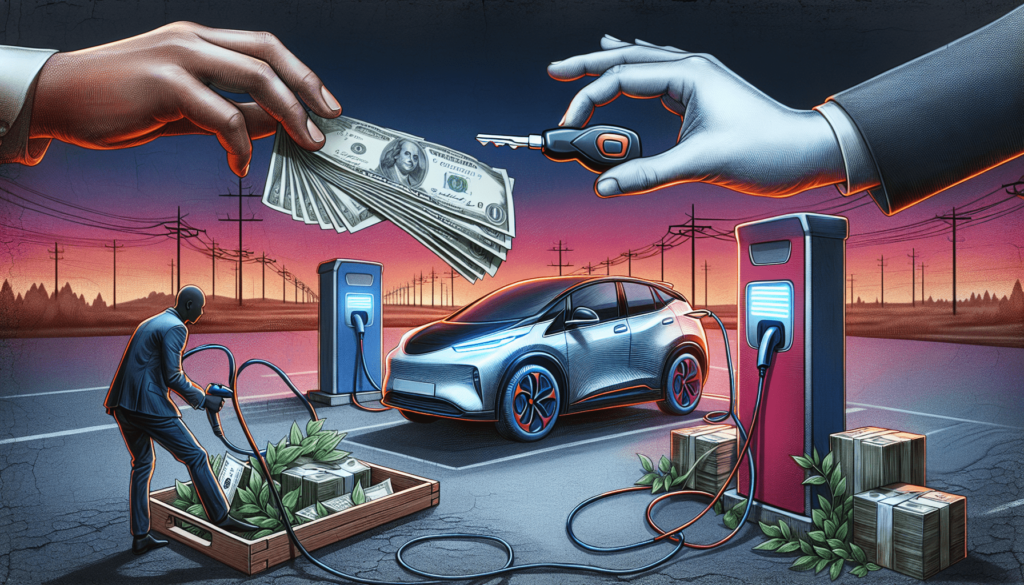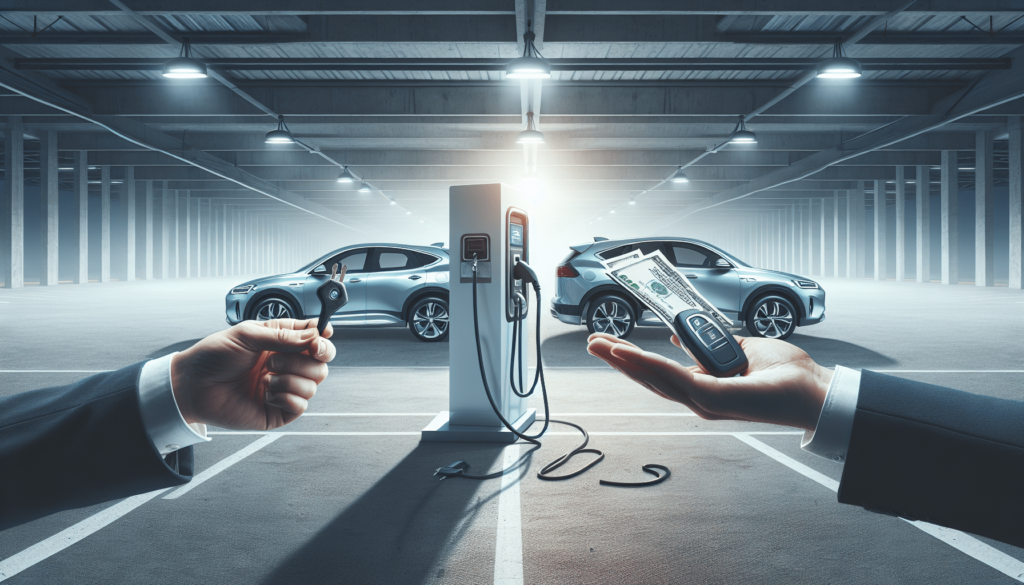Understanding the Cost of Electric Vehicles
Share

So, you’ve been hearing a lot about electric vehicles (EVs) lately, and you’re curious to understand what all the buzz is about. Well, let’s talk about the cost of these eco-friendly cars. It’s no secret that EVs are gaining popularity, but what’s the price tag attached to them? Are they more expensive than their gasoline-powered counterparts? Or maybe they’re actually more affordable in the long run? In this article, we’ll explore the various factors that contribute to the cost of electric vehicles, and by the end, you’ll have a better understanding of whether going green is a financially viable option for you.
Factors that Influence the Cost of Electric Vehicles
When considering the cost of electric vehicles (EVs), there are several factors that come into play. From battery technology and vehicle model to range, vehicle size, additional features, government incentives, charging infrastructure, maintenance and repairs, resale value, and insurance, each of these elements affects the overall price of an electric vehicle. Let’s explore each factor in more detail.
Battery Technology
One of the primary factors that influence the cost of electric vehicles is the type of battery technology used. Lithium-ion batteries, which are currently the most common and widely used, offer a good balance of performance and cost. These batteries possess a high energy density, allowing for longer ranges and faster charging times. However, they can still be expensive to produce.
Another battery technology option is nickel-metal hydride (NiMH) batteries, which are more affordable than lithium-ion batteries. However, they generally have lower energy density and shorter range capabilities. NiMH batteries are commonly found in hybrid vehicles and some entry-level EVs.
On the horizon, solid-state batteries show promise for further advancements in EV technology. These batteries offer higher energy density, longer lifespan, and improved safety compared to current technologies. However, solid-state batteries are still in the early stages of development and are not yet widely available.
Apart from the type of battery, another crucial factor is battery capacity. The higher the battery capacity, the longer the range an electric vehicle can achieve. Higher capacity batteries generally come at a higher cost.
Additionally, the lifespan of the battery must be considered. Batteries degrade over time and will eventually need to be replaced, which can be a significant expense. The longer the battery lifespan, the better in terms of cost savings in the long run.

Vehicle Model
The specific model of an electric vehicle also plays a significant role in determining its cost. Entry-level models, often referred to as budget-friendly options, usually have lower starting prices. These models tend to have a more simplified design and fewer advanced features but still offer the fundamental benefits of electric mobility.
Moving up the range, mid-range models provide a balance between affordability and additional features. These vehicles typically offer a decent range, comfortable interiors, and a range of safety and convenience features. They may also come with some level of luxury and technology upgrades.
For those willing to splurge, luxury models offer top-of-the-line features, high-end interiors, and cutting-edge technology. These vehicles often have extended ranges, more advanced infotainment systems, and premium materials throughout. Luxury EVs are designed to provide a luxurious driving experience, but they come with a hefty price tag.
Sports models and exotic EVs cater to performance enthusiasts who seek exhilarating acceleration and top speeds. These vehicles often employ powerful electric motors, aerodynamic designs, and lightweight materials. Needless to say, these high-performance EVs can be quite expensive due to their specialized nature and limited production.
Range
The range an electric vehicle can achieve on a single charge is another significant factor affecting its cost. Electric vehicles with shorter ranges usually come with a lower price tag compared to those with longer ranges. Short-range EVs are suitable for daily commuting and urban driving, where regular access to charging infrastructure is readily available.
For those needing a bit more flexibility, medium-range EVs offer a step up in distance capability. With a medium-range electric vehicle, you can comfortably undertake longer drives without worrying too much about running out of charge. These vehicles strike a balance between price and range, making them a popular choice for many.
Alternatively, long-range and extended-range EVs provide the ability to travel longer distances without needing frequent charging stops. Long-range EVs typically offer ranges that allow for road trips and long-distance travel, granting drivers peace of mind regarding range anxiety. However, these extended ranges often come at a higher cost due to the larger, more powerful battery packs required.

Vehicle Size
The size and type of electric vehicle you choose can also impact its cost. Compact electric vehicles, such as hatchbacks or small sedans, are generally more affordable compared to larger vehicles. They are ideal for urban environments with limited parking spaces and narrow streets. Compact EVs offer good maneuverability and energy efficiency, making them an attractive option for city dwellers.
Moving up in size, mid-size electric vehicles provide more interior space and comfort while still being relatively affordable. These vehicles strike a balance between compactness and roominess, making them suitable for small families or those who require a bit more cargo space.
Full-size electric vehicles offer even more space and comfort, often resembling their gasoline-powered counterparts. These vehicles are perfect for larger families or individuals who frequently travel with passengers and require ample storage capacity.
SUVs, which have gained popularity in recent years, are also available as electric vehicles. Electric SUVs provide the versatility, ruggedness, and additional cargo capacity typically associated with SUVs while offering the environmental benefits of electric mobility. However, SUVs tend to be pricier compared to smaller vehicle categories.
Minivans and pickup trucks, while less common, are also available in electric form. These larger vehicles cater to specific needs, such as carrying multiple passengers or hauling cargo, and their pricing typically reflects the additional capabilities they offer.
Additional Features
Electric vehicles, much like their gasoline-powered counterparts, come with various additional features that can impact their cost. Infotainment systems, for example, vary in sophistication and functionality across different EV models. Higher-end models may have larger touchscreens, more advanced navigation systems, and additional connectivity options, all of which contribute to a higher price tag.
Advanced safety features are becoming increasingly common in electric vehicles. Technologies like adaptive cruise control, blind-spot monitoring, and automatic emergency braking enhance safety and convenience while driving. However, these advanced safety features often come at an additional cost.
For those seeking an extra touch of luxury, premium interior materials can significantly affect the price of an electric vehicle. High-quality leather upholstery, wood or metal accents, and premium sound systems can elevate the overall driving experience but come with a higher price point.
Some electric vehicles offer autonomous driving capabilities to varying degrees. These features allow the vehicle to assist with driving tasks such as lane keeping, parking, and even full self-driving in certain situations. However, autonomous driving capabilities are usually found in higher-end models and can significantly increase the vehicle’s cost.

Government Incentives
Government incentives can play a significant role in reducing the cost of electric vehicles. Various governments around the world offer incentives to promote the adoption of clean and sustainable transportation. These incentives can take the form of tax credits, rebates, grants, and other financial incentives.
At the federal level, some countries provide tax credits or rebates that directly reduce the purchase price of an electric vehicle. These credits can make EVs more affordable and encourage consumers to make the switch to electric.
Additionally, states and local governments often offer their own incentives to further reduce the cost of electric vehicles. These incentives can vary widely, ranging from additional tax credits or rebates to free or discounted access to public charging infrastructure.
Taking advantage of these government incentives can make electric vehicles more financially accessible and contribute to a more sustainable future.
Charging Infrastructure
The availability and accessibility of charging infrastructure are essential considerations when assessing the cost of electric vehicles. Home charging stations offer convenient and affordable charging options for EV owners. The cost of installing a home charging station depends on factors such as the electrical setup of your home and the charging speed you desire.
Public charging stations are crucial for those who don’t have access to a home charging solution or need to charge while away from home. Public charging networks vary in terms of accessibility, cost, and charging speed. Some charging stations may require a subscription plan, while others offer pay-as-you-go options.
Fast charging stations, also known as DC fast chargers or superchargers, can provide a significant charging speed advantage. These ultra-fast charging stations are usually found along major highways or at specific locations and can quickly replenish the battery’s charge. However, the cost of using fast charging stations may be higher compared to regular charging options.
The cost of charging an electric vehicle depends on various factors, including the local electricity rates and the charging speed. Some public charging stations may offer free charging, while others charge per kilowatt-hour or per charging session. It’s important to consider the charging costs and availability in your area to accurately assess the overall cost of owning and operating an electric vehicle.

Maintenance and Repairs
Compared to gasoline-powered vehicles, electric vehicles generally have lower maintenance and repair costs. Since EVs have fewer moving parts, there is less wear and tear on components such as the engine, transmission, and exhaust system.
Electric motor maintenance is minimal since there are no oil changes or complex mechanical systems involved. However, periodic inspections and potential software updates may be required to ensure optimal performance.
Battery maintenance is crucial to maintaining its efficiency and longevity. Regular monitoring of the battery’s health and appropriate charging habits can help prolong its lifespan and prevent capacity degradation. Battery management systems in electric vehicles often assist in maintaining proper charging and discharging levels.
The brake system in electric vehicles tends to last longer due to regenerative braking, which uses the electric motor to slow down the vehicle and recharge the battery. This reduces the wear on traditional brake pads and components. However, brake fluid should still be periodically checked and replaced as recommended by the manufacturer.
Tire maintenance is similar to any other vehicle, with routine inspections and rotations required to ensure even wear and optimal performance. Proper tire inflation is particularly important in electric vehicles to maximize energy efficiency.
Scheduled servicing, such as cabin air filter replacement and coolant checks, should be performed according to the manufacturer’s recommendations. While the overall maintenance costs of electric vehicles are typically lower, it’s essential to factor in these routine maintenance tasks when considering the total cost of ownership.
Unscheduled repairs, while infrequent, can still occur with electric vehicles. Issues such as faulty electrical connections or components may need to be addressed, especially during the warranty period. It’s advisable to familiarize yourself with the warranty coverage and understand the potential repair costs beyond the warranty period.
Resale Value
Resale value is an essential consideration when assessing the cost of electric vehicles. The depreciation rate of EVs can vary depending on factors such as brand reputation, battery technology, market demand, and the overall condition of the vehicle.
While electric vehicles generally depreciate at a faster rate than their gasoline counterparts, the gap has been narrowing as EV technology advances, battery costs decrease, and consumer adoption increases. Additionally, certain EV models may hold their value better due to specific features or desirability.
It’s worth considering that the resale value of electric vehicles can be influenced by new technological advancements. As new models with enhanced features and improved ranges enter the market, older models may experience steeper depreciation. However, factors like maintenance history, battery health, and overall condition still play significant roles in determining the value of used electric vehicles.

Insurance
Insurance costs are another factor to consider when assessing the overall cost of electric vehicles. Several factors come into play when insurance providers calculate premiums for electric vehicles.
First, the cost of repairs and replacements is an important consideration. Since electric vehicles often utilize advanced technology and specialized components, repair or replacement costs may be higher compared to conventional vehicles. This can result in higher insurance premiums.
Electric vehicles may also be more prone to theft or vandalism due to their desirability and limited production. Insurance providers take into account factors such as the vehicle’s make, model, and security features when determining premiums.
Liability coverage is another significant aspect when insuring electric vehicles. Due to the unique characteristics of electric drivetrains, incidents involving electric vehicles may require specialized expertise or repairs, which can impact the cost of liability coverage.
While insurance premiums for electric vehicles may be slightly higher compared to gasoline-powered vehicles, many insurance companies offer specific policies and discounts for EV owners. Factors such as your driving history, location, and type of coverage required can also affect the insurance costs.
In conclusion, several factors influence the cost of electric vehicles. The type of battery technology, vehicle model, range, vehicle size, additional features, government incentives, charging infrastructure, maintenance and repair needs, resale value, and insurance premiums all contribute to the overall cost of owning and operating an electric vehicle. Understanding these factors will help you make an informed decision when considering the purchase of an electric vehicle.
Tags:
